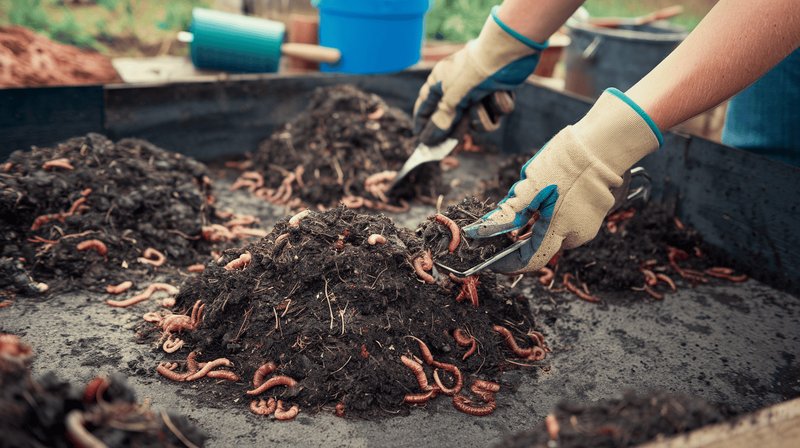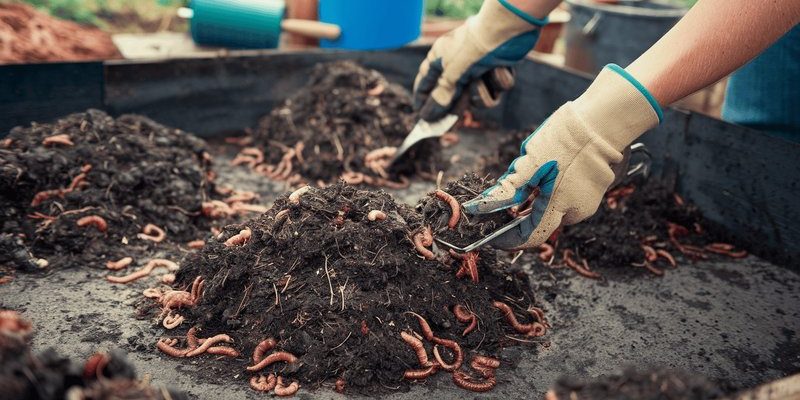
This journey might sound a bit daunting at first, but trust me, it’s an enjoyable, hands-on experience. All you really need are some eggs, the right conditions, and some patience. Whether you’re an aspiring entomologist or just looking for a fun backyard project, raising inchworms can be both rewarding and entertaining.
Understanding Inchworms
Inchworms are actually the larvae of moths from the family Geometridae. You might hear them called “loopers” because, well, they move in a distinctive looping manner. When you think about raising inchworms, it’s essential to recognize what they are and how they live.
**Behavior and Habitat:** Inchworms typically thrive in gardens, forests, and areas with plenty of leaves to munch on. They camouflage themselves against branches and leaves, helping them evade predators. They do this by mimicking the twigs and foliage, which adds a layer of intrigue when you’re trying to spot them in the wild.
**Life Cycle:** The life cycle of an inchworm consists of four stages: egg, larva (the inchworm itself), pupa (cocoon), and adult moth. This transformation is called **metamorphosis**, and observing it can be a delightful, educational experience for kids and adults alike.
Gathering Supplies
Before you dive into raising inchworms, you need to prepare. Here’s what you’ll want to have on hand:
- Container: A small terrarium or a clear plastic container with a lid works well.
- Substrate: Use leaves, soil, or even paper towels to provide a comfortable living environment.
- Food: Fresh leaves from trees like oak or cherry are perfect for inchworms.
- Humidity and Ventilation: Make sure your container has holes for air, and mist it lightly to maintain humidity.
- Observation tools: A magnifying glass can be great for getting up close and personal with your inchworms!
Setting up these supplies might take some time, but it’s worth it when you consider the adventure that lies ahead. You’ll create a cozy environment for your little inchworm friends.
Finding Inchworm Eggs
Finding inchworm eggs can be the most challenging part of this project. They’re tiny and blend into their surroundings, so keep your eyes peeled!
**Where to Look:** Inchworm eggs are often laid on the underside of leaves or near the base of trees. If you’re not sure where to start, look for common trees in your area, like oaks or pines, especially in spring.
**Identifying Eggs:** The eggs are generally round and small, often a whitish or pale color. Once you spot them, gently remove the leaves and place them in your prepared container.
Here’s the thing: If you can’t find the eggs, try visiting your local garden center or nature center. Sometimes, they might have inchworm eggs available for educational purposes.
Caring for Inchworms from Eggs to Caterpillars
Once you have your inchworm eggs in their new home, you’ll need to monitor them closely. They’ll hatch into larvae in about a week, depending on the temperature and humidity.
**Temperature and Environment:** Ideally, inchworms prefer temperatures between 70°F and 80°F. Keep them in a bright area, but avoid direct sunlight, which could overheat the container.
**Feeding:** As inchworms hatch and begin to grow, they’ll be ravenous! Offer them fresh leaves every few days, making sure to remove any wilted or moldy leaves. It’s essential to keep their diet fresh, as this will help them grow strong and healthy.
**Cleaning the Container:** Regularly check your container for waste. As inchworms eat, they produce frass (a fancy term for poop). Cleaning the container helps prevent mold and keeps your inchworms happy and thriving.
Observing the Metamorphosis Process
As time goes on, you’ll notice your inchworms getting larger and larger. This is the exciting part! They’ll go through several molts as they grow, shedding their skin to accommodate their increasing size.
**Molting:** Inchworms can molt several times before they pupate. Each time they molt, they’ll appear a bit different. It’s fascinating to witness this natural process, almost like watching a live magic show!
**Transition to Pupae:** After a few weeks of feasting and growing, your inchworms will prepare to pupate. They might attach themselves to a twig or leaf in the container to form a cocoon. During this stage, it’s crucial to ensure the environment remains steady, as they are vulnerable.
**Patience is Key:** Metamorphosis can take some time—so don’t be alarmed if you don’t see immediate changes. Just keep monitoring them, maintaining their habitat, and waiting for the magical transformation to unfold.
Emerging Adult Moths
When your inchworms finally transform into moths, it’s a moment to celebrate! They’ll emerge from their cocoons, often looking a bit crumpled at first.
**What to Expect:** Adult inchworms usually have soft, fuzzy bodies and can vary greatly in color and size depending on the species. The adults will need a bit of time to pump up their wings before they can take flight.
**Release or Keep?:** After they’ve emerged and dried, you’ll have the option to release them into your garden or keep them for observation. Just remember that they might not last long in captivity, as many adult moths have a short lifespan.
Tips and Troubleshooting
Raising inchworms can be a joyful adventure, but it’s not without its challenges. Here are a few tips to keep things running smoothly:
- Watch for Pests: Keep an eye out for any unwanted pests that might invade your container.
- Maintain Humidity: If the environment is too dry, your inchworms may struggle. Regular misting can help keep things balanced.
- Feeding Routines: Establish a schedule for feeding and cleaning to keep your inchworms healthy.
If you run into issues, don’t hesitate to research or ask for advice from local entomologists or gardening communities.
Final Thoughts on Raising Inchworms
Raising inchworms from eggs to adults is not just about the end product—it’s about the entire experience. Watching them grow, transform, and eventually take flight can be incredibly rewarding. Plus, you’re contributing to the cycle of life!
Ultimately, this little project allows you to connect with nature in a hands-on way, fostering a deeper appreciation for the life forms that share our world. So gather your supplies, find some eggs, and embark on this delightful journey. You might just fall in love with these tiny creatures!

